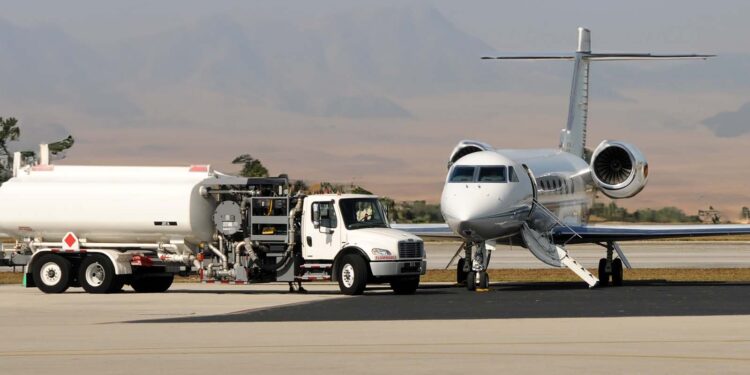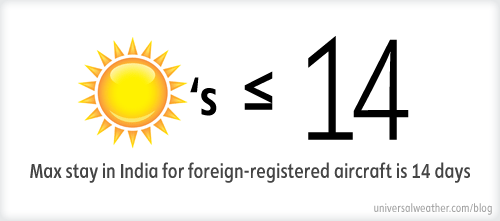Ground Handling and Aircraft Fueling in India: What You Need to Know

This business aviation blog post is part of a series on operating to India and continues from our last post entitled: 10 Tips for Navigating India’s Permits, PPRs and Slots.
While ground handling and aircraft fuel services in India continue to improve, due to a lack of infrastructure, the country still poses some operational challenges. Indian authorities are beginning to recognize the value of business aviation and are working to address these issues. However, operating to India is still quite complex, and operators should have realistic expectations and not try to operate without a handler or expect Western-style Fixed-Base Operators (FBOs). The good news is that with proper planning and by simply keeping in mind the below tips, there’s no reason a trip to India can’t operate smoothly.
1. Use an experienced and trustworthy ground handler
Attempting to operate to India without using a trusted and reliable ground handler is risky. Because of the processes and the multiple governmental agencies from which you’ll need to gain approval, trying to do this yourself in a timely manner is virtually impossible. The authorities are often located at opposite ends of the airport, and it would require an operator to be in more than one place at the same time to have any hope of completing the necessary requirements in a timely fashion.
We recently saw a case in which an operator who attempted to self-handle at Mumbai (VABB) was ultimately stuck at the airport for 14 hours. It’s always safest to have a ground handler, as they will take care of all the requirements for you and, most importantly, will have a working relationship with the authorities to expedite service as much as possible in compliance with all laws and regulations.
It is also important to note that ground support equipment and tow bars may or may not be available at all destinations. At major airports such as Delhi (VIDP) and Mumbai (VABB), there’s a good supply of equipment for common business aircraft types such as Gulfstream and Global Express. However, that’s not always the case at more remote airports. A good ground handler will know which airports have what equipment and can arrange a full range of services and ground handling at more remote airfields.
2. Do not expect Western-style FBOs. Prepare your passengers.
In February 2010, a new full-service FBO – complete with a terminal and full ground-handling capabilities – became operational in Mumbai (VABB), and Delhi (VIDP) just opened a new international terminal. However, it is still not what passengers have come to expect in the United States and Europe.
Passengers will go through immigration and customs clearance and get into local transport curbside. They will typically go through the same customs, immigration and quarantine lines and area as airline passengers, but a good ground handler will try to expedite the process. Vehicles are not permitted on-ramp, unless your flight is carrying government or diplomatic officials. Crew will go through a similar process and are put on to their transport.
3. Budget extra time to return to the aircraft once you clear immigration
Before clearing customs and immigration, make sure you haven’t forgotten anything. Once you clear, you will not be allowed back on the ramp without a special pass. This pass can take quite a while to obtain. Once you’ve cleared immigration, the aircraft will be sealed and can’t be re-entered without this pass.
4. Remember: Maximum stay in India is 14 days

Keep in mind that the maximum stay in India for a foreign-registered aircraft is 14 days. You will have to exit the country and return if you wish to remain in India more than the maximum allotted time. If you are in Chennai (VOMM), for instance, you may fly out to Colombo, Sri Lanka (VCBI), on the 14th day and then return on the same day.
5. Set up your jet fuel authorizations in advance
Jet fuel authorizations should be set up in advance of your operation to India. Jet fuel suppliers generally do not accept credit and want to be paid either with cash or demand draft. Confirm all jet fuel arrangements prior to arrival or departure and carry cash for unexpected eventualities. Your 3rd-party provider can arrange credit and make jet fuel payments on your behalf.
6. Be prepared for fueling delays
Keep in mind that there can be delays in fuel service in India, as jet fuel providers are more focused on airline operations than general aviation. You can’t always guarantee that fuel trucks will arrive on time. If you’re requesting fueling on arrival, your ground handler should be notified in advance. Crews often call their ground handler with a jet fuel request from “top of descent.” As there are no air-to-ground frequencies for ground local handlers within India, it’s best to call your ground handler by SATCOM or phone prior to landing.
7. Keep in mind that you will be taxed for jet fuel you uplift and jet fuel you’ve tankered
Jet fuel taxes vary from airport to airport. They can be in the range of 2,800-3,000 Indian Rupees (INR) per kiloliter (kl). Jet fuel prices in India are set by the Petroleum Ministry. However, fees and taxes will vary among airports and India’s 26 states. If you land in India, and your next destination is a domestic flight, you’ll be charged tax at approximately 28 cents per gallon (this price may change) for any jet fuel uplifted, but that will not be the case if your next destination is international. Also, tankering jet fuel may not be a good option if your next destination is a domestic one, as additional fees will apply. For example, an operator landing at New Delhi (VIDP) from Kuwait City, Kuwait (OKBK) with 5,300 liters of jet fuel remaining on board, whose next leg is within India, will pay a duty of approximately 16,644 INR. Fuel tankering is considered a revenue loss to the country; however, that’s not a consideration when it’s an international technical stop only, as the fuel never enters the country.
| Fuel on arrival at VIDP from OKBK: | 5.3KL |
| Fuel price on 11/01/2011: | 37000 (INR) |
| Cost of Fuel: | 37000×5.3 = 196100/- |
| a) CVD @ .8%: | 15688/- |
| b) Cess on (CVD) @ 3%: | 471/- |
| c) Cess on (a+b) @ 3%: | 485/- |
|
Total duty on fuel:
|
16644/-
|
| Airport | Domestic next-leg price/gal | International next-leg price/gal | ||||
|---|---|---|---|---|---|---|
| Base price | Price with taxes | Base price | Price with taxes | |||
| Note: Taxes are added to fuel prices on domestic next-leg trips in India
Illustrative purposes only. |
||||||
| Agra, Uttar Pradesh – VIAG | $4.1060 | $4.1060 | $4.1060 | $4.1060 | ||
| Bangalore, Karnataka – VOBL | $4.2587 | $5.3559 | $3.6355 | $3.6355 | ||
| Chennai (Madras), Tamil Nadu – VOMM | $4.2938 | $5.4375 | $3.5805 | $3.5805 | ||
| Delhi (New Delhi), Delhi – VIDP | $4.3365 | $5.1298 | $3.6605 | $3.6605 | ||
| Goa, Goa – VAGO | $4.1759 | $4.9431 | $3.5105 | $3.5105 | ||
| Hyderabad, Andhra Pradesh – VOHS | $4.4706 | $5.1283 | $3.7155 | $3.7155 | ||
| Jaipur, Rajasthan – VIJP | $4.3207 | $4.8724 | $3.5755 | $3.5755 | ||
| Kolkata (Calcutta), West Bengal – VECC | $4.6977 | $5.7821 | $3.7355 | $3.7355 | ||
| Mumbai (Bombay), Maharashtra – VABB | $4.1203 | $5.0579 | $3.5565 | $3.5565 | ||
| Udaipur, Rajasthan – VAUD | $4.4620 | $4.4620 | $4.4620 | $4.4620 | ||
8. Expect invoices to trickle in weeks and months later
You may have completed your trip long ago but don’t expect your invoicing to be ready. It is not unusual for some invoices for government services for jet fuel and ground handling to trickle in weeks and even months following the trip. Military airports often do not send invoices until two to three months post-flight. In addition, ground handling costs in India include itemized charges for the full range of services used: truck, lavatory and water services, etc. A ground handler can provide credit for all services and settle all invoices.
Questions?
If you have any questions about this article, contact Christine Vamvakas at christinevamvakas@univ-wea.com.
Later we’ll discuss arranging auxiliary services in India.




